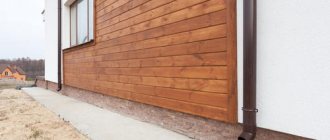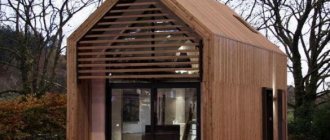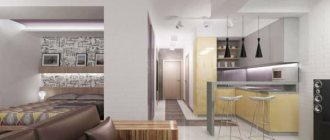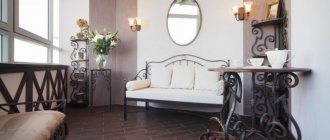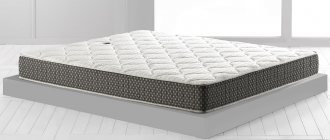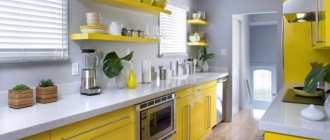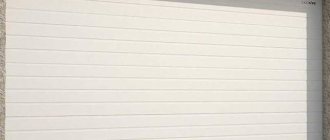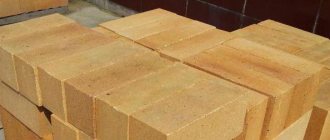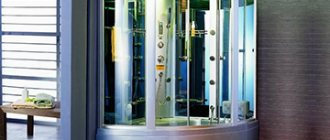Drawing paper Lily Holding “Rybachka”, for watercolor, folder, A3, 20 sheets
284 ₽ More details
Optimum belt bag
990 ₽ More details
Lathes
In the warm season, many people go to their dacha for barbecue, and in order for the food to turn out tasty, it needs to be cooked on the grill. Many people buy such devices, but you can make them yourself. The main thing is to choose the right material and dimensions of the structure. From the article you will learn how to determine the size of the grill.
There are several factors to consider
Focus on mandatory factors
Design parameters for barbecue depend on several factors:
- Method of roasting meat. The distance between the walls depends on this. Products can be cooked on skewers or used for this purpose on barbecue grills. Skewers are made according to standard parameters, so the grill will have to be made accordingly. But with a grill it is much easier, because there are many different sizes that are selected depending on the grill. Thus, first a grill is built, and then a grate is selected based on its parameters.
- The need for transportation. This is the answer to the question of what the material from which the structure is made should be. It all depends on where exactly you plan to enjoy the kebabs. If the grill is installed in your summer cottage, you can make it from cast iron or thick metal. Such a structure will be permanently located on the site, and will only be removed indoors for the winter, when it is no longer needed. If you don’t have a summer cottage, but from time to time you go out into nature and cook barbecue, it’s better to make the grill portable. It is advisable to make it from lightweight material, making sure that it is foldable and compact.
- Material for cooking meat. The optimal depth of the structure depends on this. There are two options: coals and firewood. In the first case, the grill is made shallow, because the coals fit compactly under your meat. But in the second case, the depth will be significant, since a lot of firewood will be needed to get the required amount of coals for cooking barbecue.
For hiking and picnics
The first trip for a cheap collapsible barbecue may be the last. The fact is that the metal from which it is made is usually very thin - 0.5 - 1 mm. At high temperatures it “leads”, it loses its shape and the ability to assemble correctly. However, if you just need a cheap grill for several times, then you can take it. Their prices are low - from 9 rubles. They have a lot of manufacturers and are sold in almost any store and gas stations.
More serious collapsible barbecues, which will last for more than one season, are made of thicker metal - from 1.5 to 4 mm, stainless steel or steel coated with heat-resistant paint.
Prices for collapsible braziers made of black steel with a wall thickness of 1.5 mm - from 40 rubles. With intensive use it will last for a season. About the same grill, but made of stainless steel, will cost 120 rubles. But it will last a very long time.
Photo: moygrad.kiev.ua
A collapsible barbecue made of metal from 3 mm is more expensive - 100 rubles and much higher. The price is seriously influenced by the equipment: skewers, bag-case, spit, grill, lid.
There are also improved models - folding ones, they are equipped with hinges and are easier to fold.
Photo: sport-center.by
If you want your collapsible grill to last a long time, do not light a fire in it. It is better to pour ready-made coals into it. Moreover, braziers made of steel 1-2 mm thick “work” only on coal.
Collapsible barbecues are produced by the Minsk Heating Equipment Plant. True, made of cast iron (Capricorn model). It is clear that no one will dare to take it with them on a hike - it weighs 50 kg. Its cost in the company store is 244 rubles. It is used as a stationary barbecue.
Standard parameters
Now let’s outline the generally accepted parameters of a proper barbecue. Of course, you calculate the ideal parameters for your design yourself, taking into account the above nuances. However, if you don’t want to fool yourself with extraordinary options, we suggest building a standard grill for preparing delicious kebabs. Below we will consider each parameter separately in detail.
Width
The width of the structure directly depends on the size of the skewers or grates on which you are going to cook the meat. On average, the total length of the skewer is 45–50 cm, of which 30–35 cm are “working” (that is, the part on which the meat is threaded). That is why a standard grill should be no wider than 40 cm, otherwise the heat that comes from the coals will be wasted, and the material consumption and cooking time will increase. But the standard dimensions of a grill for frying meat are 18x28 cm, so you need to calculate the width based on the above figure.
Depth
This parameter is selected based on two factors: the type of meat and the temperature conditions. Most often they cook pork or lamb, which for good roasting should be at a distance of 5–10 cm from the coals.
The optimal depth is about 20 cm. For good roasting, the coals must be laid out in a layer of 5–10 cm, and the distance to the meat should be approximately 8–10 cm. If you are using firewood rather than coals, then the container must be made a little deeper to fit more firewood. But in this case, keep in mind that the layer of coals should be larger than the previous one, because the distance to the meat also increases.
Height
The height of the barbecue is calculated depending on the height of the person who will cook the barbecue. As a rule, the size is calculated based on the distance from the feet of the person who will stand behind the grill to the waist. This height allows a person not to strain the spine by constantly bending over the structure.
The generally accepted standard is a height of 75 cm to 125 cm. The nuances depend on your height (or who will cook the meat).
The height must be at least 75 cm.
Length
To turn the skewer over without touching the others, the distance between them should be 5 cm. Accordingly, think about how much food you will need to cook. If you are going with large groups, you will need a long structure that can hold up to 10 skewers. 100 cm should be enough. But if your company is small, and 6 skewers (standard set) are enough for you, then you should not make the device longer than 60 cm.
Barbecue for the garden and home
Continuing the topic of cast iron grills - they are used exclusively by those for whom cooking meat is an art. They retain heat much longer and more evenly. And the thick walls allow you to use not only charcoal, but also safely burn any wood without fear of deformation and burnout.
Cast iron grill
Even if the coals or wood burn out, the heat accumulated by the cast iron is enough to bring the dish to condition and turn the meat into a tender, rosy and aromatic kebab. A cast iron grill can also serve as a smokehouse.
Cast iron is practically not subject to corrosion, so this grill lasts almost forever. In addition to durability, it is worth paying attention to its aesthetic appeal, since casting technology allows you to create a variety of designs on its body.
Photo: sport-center.by
And yet, the majority install steel barbecues in their yards. Their design options can be very different - wide, deep, rectangular, cylindrical and trapezoidal, round. And on any of them the meat will be fried. However, experienced grillers say that the quality of frying and the finished product depends on the correctness of the grill. At the same time, the criteria for this very “correctness” vary greatly.
For example, the standard is a barbecue that looks like a metal box with holes on the sides for blowing coal. But some experts in this matter say that there shouldn't be any - no holes at all on the sides and bottom. We are unlikely to get to the truth, so it is better to try cooking shish kebab on different grills.
Indicators for brick structures
Brick structures are installed in summer cottages and take up a lot of space. They are stronger and more durable than metal ones. If you are used to often going to barbecues, a brick grill is what you need. Their basic parameters are the same as those of conventional barbecues, however, additional elements can be attached to them. Such elements could be a chimney or a dishwasher. Such designs increase the comfort of the process.
What features should be taken into account when building a brick zone:
- Their length, width and height are standard. This is done to make cooking meat dishes much more convenient.
- The depth depends entirely on the format of the chosen brick. If the brick has a format of 6 cm and the joint thickness is 1 cm, then the depth will be 21 cm (three rows) or 28 cm (four rows).
Also keep in mind that such a design will change the landscape and you will have to think about how to decorate it beautifully. Choose a suitable place for it and arrange it in such a way that the grill can be somehow covered or insulated for the winter. If you feel that building such a fireplace is too difficult for you, be sure to involve professionals.
Changes in indicators depending on the material of the barbecue: dimensions, drawings
When working on a drawing of a barbecue, you should remember that its dimensions will directly depend on what material it is made from. Products made from sheet metal are usually smaller than their brick counterparts. That is why, when choosing the optimal height of a barbecue for a metal barbecue, you cannot rely on the values recommended for brick structures.
The parameters of the manufactured device depend on the material PHOTO: pechi-kamin.ru
Brick structures
The large size of the brick imposes certain requirements on the dimensions of the finished structure. The presence of a chimney, sink or countertop further increases the overall dimensions. That is why it is very important to figure out how to properly make a brick grill.
When making a brick structure, a number of nuances are taken into account:
- the width, length and height of the side are adjusted to standard parameters;
- The depth of the brazier is consistent with the format of the brick and the thickness of the seam being formed. Depending on the number of rows laid, it can be 21 or 28 cm.
Attention! The service life of a brick structure is significantly longer than that of a metal structure.
The parameters must be consistent with the dimensions of the brick PHOTO: sc02.alicdn.com
Dimensions and design features of a metal grill
When working through the drawings and choosing dimensions, it is important to remember how to properly weld the grill so that it can last for a very long time, properly performing its function. To manufacture such a structure, not only new sheet steel can be used, but also used products of a suitable length. Some users use old metal barrels and even gas cylinders to make a semicircular model. Depending on the available metal elements, the optimal dimensions of the barbecue grill are selected.
To extend the service life of a metal structure, you should initially choose sheet material made of stainless steel or, after manufacturing, treat it with special protective compounds. Even a small layer will protect the metal from corrosion.
Tips for metal analogues
Metal barbecues are lighter and more practical than their brick counterparts. There are many nuances here that depend on the selected material from which the grill will be made. Let's look at some of them:
- You can make a barbecue device using a 200-liter barrel. However, here the width will always be larger by default, since the dimensions of the barrel do not coincide with the standard dimensions.
- You can use a stainless steel washing machine tub to create a vertical pipe fireplace. It is not possible to adapt skewers to this design, but a metal grill grate will work perfectly.
- The legs can be made from a variety of used materials. This is not always convenient from a practicality point of view, but it will make your grill unusual.
- Whether to drill holes or not is up to everyone to decide for themselves. Many agree that they do more harm than good.
- It is recommended to coat the metal fixture with fire-resistant paint. This will give it a presentable look and increase its service life.
See also: what paint is suitable for a barbecue.
So, we looked at the standard sizes of barbecues. Now you can build this structure yourself and please your loved ones with a delicious barbecue.
Grill dimensions
By observing the correct dimensions of the elements of the brazier and the height of its legs, you can create the optimal temperature regime for cooking barbecue over coals. To do this, you need to know the length and design of the skewers/barbecue grill, use the drawings or at least the diagram provided below. In other cases, the dish will burn or remain uncooked, and the service life of the hearth will decrease.
Dimensions of different types of barbecues
Fireplaces for frying meat on coals are made by hand from various construction materials. Which also leaves an imprint on the dimensions of the barbecue structure. For example, a fryer box made from sheet steel will be compact, while a box made from brick will be oversized. Cutting sheet steel is easier than splitting stone for masonry.
Collapsible and folding fireplaces are designed for transportation and usually have smaller dimensions compared to stationary-type roasters.
Width
When using standard skewers, the width of the grill depends entirely on their length:
- size – 30 – 35 cm;
- devices for turning the skewer - a vertical slot in the side wall of the frying pan on one side (pointed) of the skewer.
Turns are carried out according to the following scheme:
- skewers are inserted with the far pointed edge into the vertical slot;
- then they turn 180 degrees into the same slot;
- Next, individual sections of the kebab are browned, the skewers are turned 90 degrees in any direction, and placed flat on the top edge of the grill, not a groove.
This technology is considered classic, but there are electrically driven skewers and skewers of various designs that allow them to be fixed relative to the coals at any angle.
In accordance with the standard parameter of a barbecue grill, it requires a roasting pan width of 15 - 18 cm. It should be taken into account that when turning it rests on the side walls of the grill at different heights.
Depth
By default, the efficiency of open hearths is significantly lower than that of barbecue stoves with a combustion chamber. With the same fuel consumption, the yield of kebabs is noticeably lower. The depth of the grill is selected depending on the meat and temperature:
- under normal conditions, pieces of pork or lamb should be at a distance of 5 - 10 cm from the coals, which are poured in a layer of 5 - 10 cm to the bottom of the roasting pan;
- Thus, the height of the side walls is 15 – 20 cm.
Attention: The main mistake when making a brazier yourself is burning coals directly inside it. For a large fire, the depth of the grill increases, the distance from the burnt-out firebrands to the skewers becomes greater than the required value. The barbecue takes longer to cook, and the consumption of firewood increases.
Length
If the previous dimensions of the grill are considered critical for the process of preparing barbecue, then its length is a less important factor. However, some nuances should be taken into account:
- vertical slots for skewers are made at a distance of 8 - 10 cm from each other;
- if you place them closer, the meat will not cook through and it will become more difficult to rotate the skewers.
Therefore, the length of the roasting pan mainly depends on the number of guests or family members for whom the dish is being prepared. If the grill is used in a large company, you will have to set a queue and stock up on more coals.
In the order of barbecue ovens, the sizes of both grates and skewers are taken into account, but the average sizes are taken. Only a professional mason can correct the design; it is better for a home craftsman to adhere to the layout diagram without changes.
For barbecue grates, a 30 cm hearth length is enough; the meat cooks faster, so a portion of coals lasts longer.
Grill height
The quality of operation of the hearth is affected by the height of the grill from the ground level and it should be from 75 cm to 125 cm. A comfortable value for this size is the level from the soles of the griller to his hands:
- in this case, the spine is unloaded, there is no need to bend over the fryer;
- Natural draft increases if there are holes in the side walls of the fireplace.
So the height depends on who will cook the barbecue most often. We have already given several drawings of metal structures above, and here we will add another drawing of a brick barbecue.
Attention: In mobile barbecues, the comfort of preparing barbecue is deliberately sacrificed at the expense of increased ease of transportation. Short legs take up less space in the trunk of the car.
Well-chosen sizes for metal structures
In order for the metal barbecue to turn out correctly, it is necessary to take into account everything from the height of the owner to the number of pieces placed on the skewer.
Width
The width of the grill is determined by the length of the skewers. The full length of a standard skewer is 45 cm, the working area is 30 - 35 cm. Taking into account a small margin, the maximum width of the frying pan is 35 cm. Increasing the size leads to improper heat distribution, heat loss, and uneven cooking of food.
How tall should the grill be?
The height of the barbecue grill is one of the important characteristics. To use the kebab maker comfortably, it should not be too low or high. The full height of the barbecue is determined taking into account the height of the owner and is 0.8 - 1 m. To clarify these dimensions, you need to measure the distance from the ground to the elbow.
Length
The correct length of the barbecue is calculated by the formula: L = N * l , where N is the number of skewers, l is the distance between their axes, equal to 7 - 10 cm.
For example, 6 servings of shashlik being cooked at the same time will take up the length: 6 * (7 - 10) = 42 - 60 cm. If you move the skewers a little closer to the ends, a small device 40 cm long is enough. If you prefer to place the skewers loosely or add 2-3 more – choose a length of 60 cm.
Standard rectangular barbecue grates 30 x 28 cm will also fit into the correct dimensions of an iron barbecue: for 2 grates, a barbecue length of 60 cm or more is suitable. In this case, you can combine one grate and skewers.
Length 60 cm is the most versatile size, allowing you to cook quite a lot of food without wasting coal.
For larger companies, choose a barbecue length of 80 cm.
Devices of longer length are rarely used at home. They find their application in public catering establishments and catering.
Depth
The depth of the grill is determined based on the distance from the product to the coals and the thickness of the fuel layer.
The correct distance from the coals to the meat in the grill is from 12 to 15 cm. The distance has been verified by many years of experience among amateurs, confirmed by professionals, and is also explained by the laws of physics.
Every centimeter is important here - after all, the actual heat is inversely proportional to the square of the distance to the coals. In practice, this means that if you reduce the distance from the skewer to the coals by 2 times from 12 to 6 cm, then the thermal effect will increase 4 times.
If the distance is shorter, the outside of the kebab will fry much more intensely and burn faster. At the same time, it may not be fried inside, especially if the pieces are tight and large enough. Skewers need to be turned frequently. In addition, the fire that appears when coals are ignited from dripping fatty juice can burn the dish, leaving only coals.
DIY brick grill
Everyone knows that brick retains heat for a long time, and therefore on such a grill it is wonderful to cook barbecue, meat on the grill, as well as pilaf and fish soup. The choice of dishes is limited only by your chef's imagination.
If there is enough free space on the site, it is advisable to combine a brick grill with a gazebo or space for a dining area. The building occupies a decent area, has a foundation and cannot be removed or moved, so choose the location carefully.
The foundation is poured with a strip, going half a meter into the ground. The ideal material is natural stone and stove brick. Laying a fireplace requires knowledge and skills, so entrust this process to a specialist if you are not confident in your abilities.
When you decide to build it yourself, consult a specialist, do everything carefully and slowly.
Bring your ideas to life with confidence. We have on sale all the materials needed to make a barbecue - steel, cast iron, brick and stone. By following building codes and choosing a location in compliance with fire safety regulations, you will organize an oasis on your site, where you can fully relax, recharge your batteries, and be with friends and family. Good luck to you!
